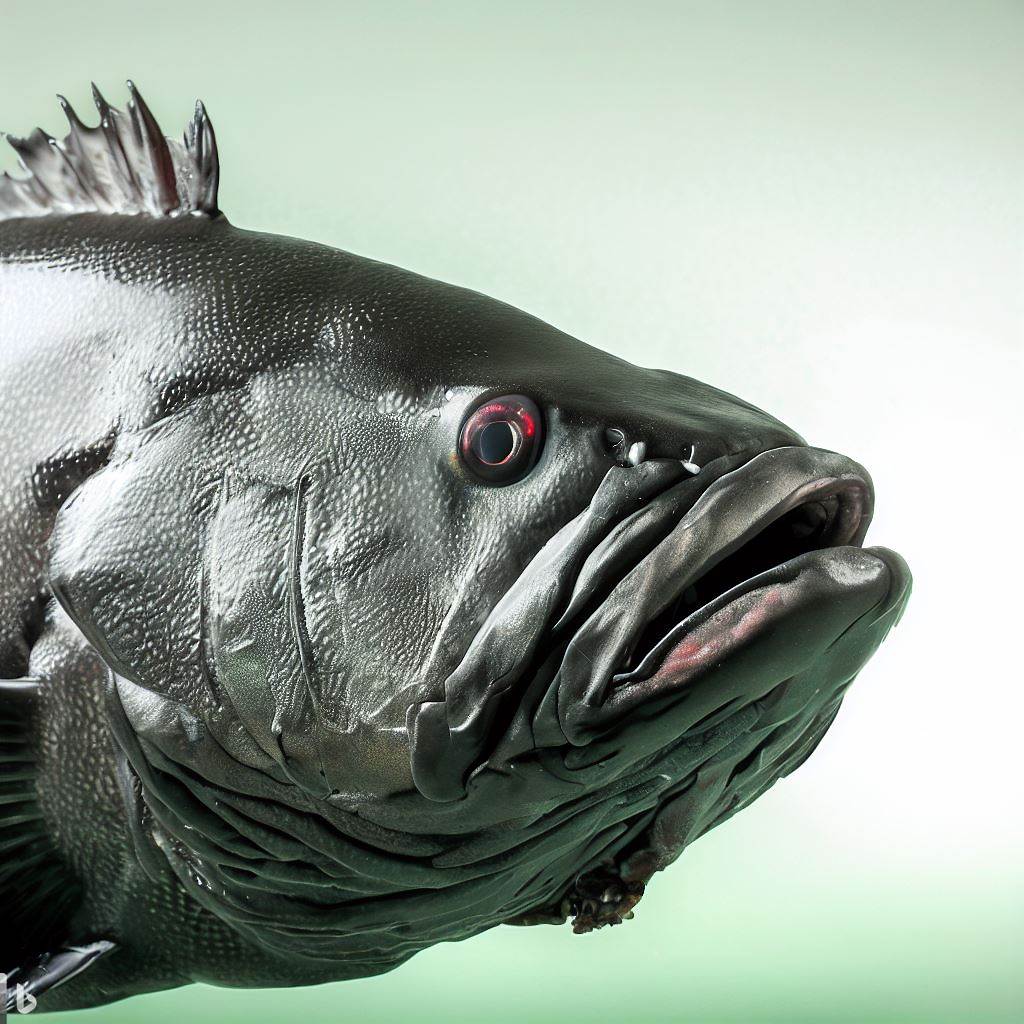Black grouper

In the vast realm of marine life, the Black Grouper (Mycteroperca bonaci) emerges as an intriguing species, captivating the attention of both scientists and enthusiasts. Also referred to as the Atlantic Goliath Grouper or simply Goliath, this fish belongs to the Serranidae family, which encompasses numerous other grouper species. Let us delve into the anatomy, physical characteristics, and various aspects of this remarkable fish.
The Black Grouper showcases an imposing presence, boasting an average length of 120 centimeters (47 inches) and a maximum recorded length of 250 centimeters (98 inches). In terms of weight, it can tip the scales at an average of 100 kilograms (220 pounds), with some individuals surpassing 300 kilograms (660 pounds). Fascinatingly, according to ichthyological data, this species can live up to 37 years. Its elongated body is adorned with dark gray to olive-brown hues, while the fins and operculum edges often exhibit vibrant colors, ranging from reddish-brown to bright yellow.
Optimal Fishing Time for the Black Grouper
To optimize the chances of a fruitful catch, comprehending the most favorable fishing times for the Black Grouper proves crucial. This species demonstrates specific preferences based on the season, time of day, and prevailing weather conditions.
During spring (March to May), the Black Grouper tends to exhibit heightened activity in the early morning and late afternoon hours. Their feeding behavior thrives in water temperatures ranging from 68 to 78°F (20 to 26°C). In summer (June to August), these fish flourish in warm waters, favoring temperatures between 75 and 85°F (24 and 29°C). They display an inclination to feed during the early morning and late evening, steering clear of the scorching midday sun.
In autumn (September to November), the Black Grouper becomes more active during the day as water temperatures slightly cool down to a range of 70 to 80°F (21 to 27°C). Lastly, during winter (December to February), this species adapts to colder conditions by reducing its activity levels and seeking refuge in deeper waters. The optimal temperature range for winter activity hovers around 66 to 76°F (19 to 24°C).
Distribution of the Black Grouper
The Black Grouper enjoys a wide distribution across the Western Atlantic Ocean. Its presence spans from the Carolinas in the United States to southern Brazil, encompassing the Gulf of Mexico and the Caribbean Sea. Additionally, this species inhabits the waters surrounding Bermuda and the Bahamas.
Within this extensive range, the Black Grouper exhibits a preference for coral reefs, rocky ledges, and submerged structures, such as shipwrecks. These habitats offer ample opportunities for the grouper to seek shelter and ambush their prey.
Black Grouper Spawning
The reproductive cycle of the Black Grouper represents a vital facet of its life history. Spawning primarily occurs from May to August, with a peak during the full moon. Water temperature plays a pivotal role during this period, ideally ranging from 77 to 84°F (25 to 29°C). These specific conditions trigger the fish to congregate in large groups, rendering them more susceptible to fishing activities.
It is noteworthy that the Black Grouper is a protogynous hermaphrodite, capable of changing sex throughout its life. Initially, individuals start as females, but as they mature, some undergo a sex change and transition into males. This biological characteristic contributes to the reproductive success and sustainability of the species.
Dietary Preferences of the Black Grouper
The Black Grouper assumes the role of an opportunistic predator, exhibiting a diverse diet. Juveniles primarily feed on crustaceans, such as crabs and shrimp, while adults adopt a more piscivorous diet, preying on small fish like grunts, snappers, and parrotfish. Their hunting technique revolves around ambush-style tactics, involving patient lurking and swift pouncing upon unsuspecting prey.
As a top predator, the Black Grouper plays a significant role in regulating the populations of small fish and other aquatic organisms. By maintaining these populations in check, the grouper aids in preserving the balance and overall health of the ecosystem.
Ecological Importance
The Black Grouper holds substantial ecological value within marine ecosystems. Its role as a predator contributes to the regulation of prey populations, thereby ensuring the diversity and stability of the aquatic community. Furthermore, the presence of the Black Grouper serves as an indicator of a robust and well-functioning marine ecosystem.


